When we invest in cryptocurrencies, the chosen platform makes all the difference. We tested two exchanges with operations in Latin America: the global Binance and the Mexican Bitso.
We used the same strategy that any investor would use: deposit, purchase, exploration, and support. We share our experience with each platform and see what works well... and what can improve.
The test screens are in Portuguese because it was conducted by a Brazilian user. However, the described functions are also available in Spanish in countries like Mexico, Colombia, and Argentina. When we mention the 'Pix' system, we refer to the instant payment method from Brazil, which allows immediate and free transfers between bank accounts and digital wallets.
Home screen and first contact: Binance vs Bitso
From the first login, clear differences are perceived.
In Binance, the home screen is filled with resources: buttons for OTC, Earn, Referrals, total balance, and personalized suggestions. For more experienced users, this range of options can be very useful, but it can intimidate those taking their first steps. You can also access Binance Square directly from the app, where you can find analysis and relevant trends to do DYOR (do your own research).
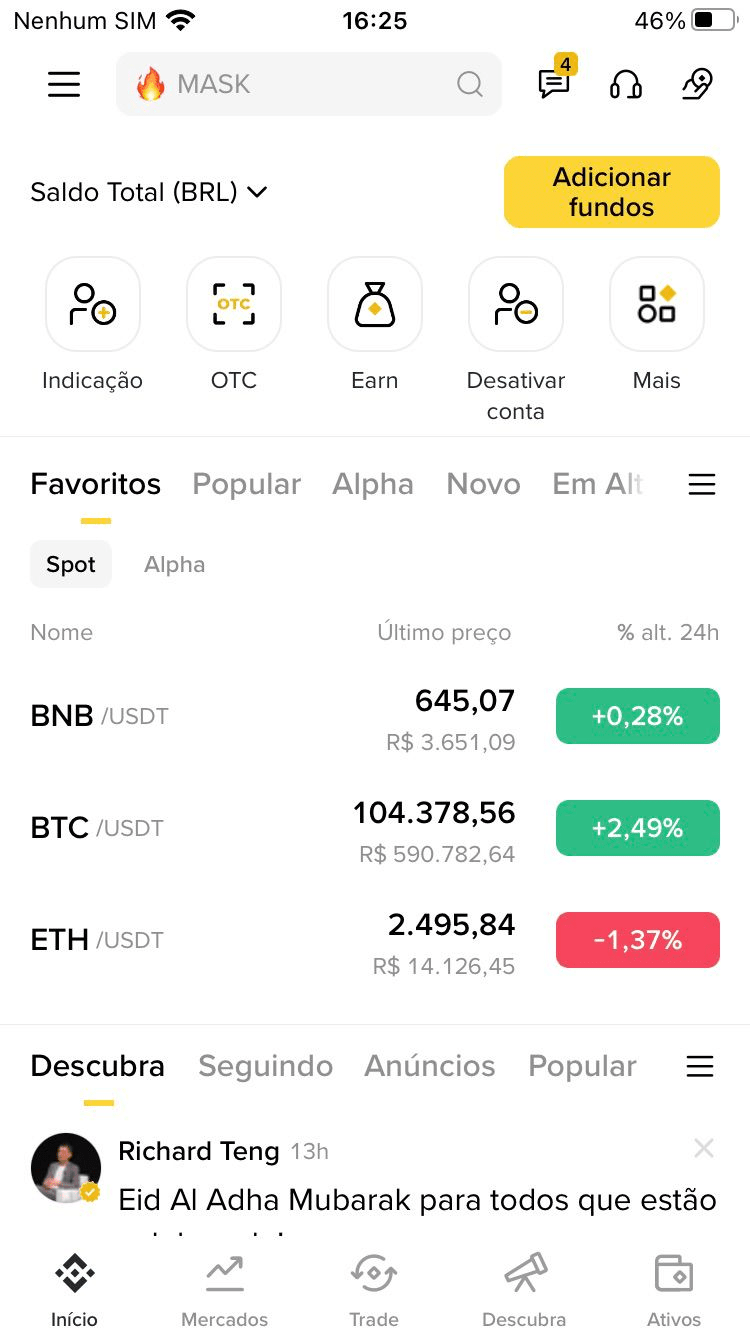
Bitso, on the other hand, shows a simpler and more direct interface. On the main screen, there are quick accesses to deposit, buy/sell, use Pix, and investment strategies. Everything works intuitively, making it ideal for beginners.
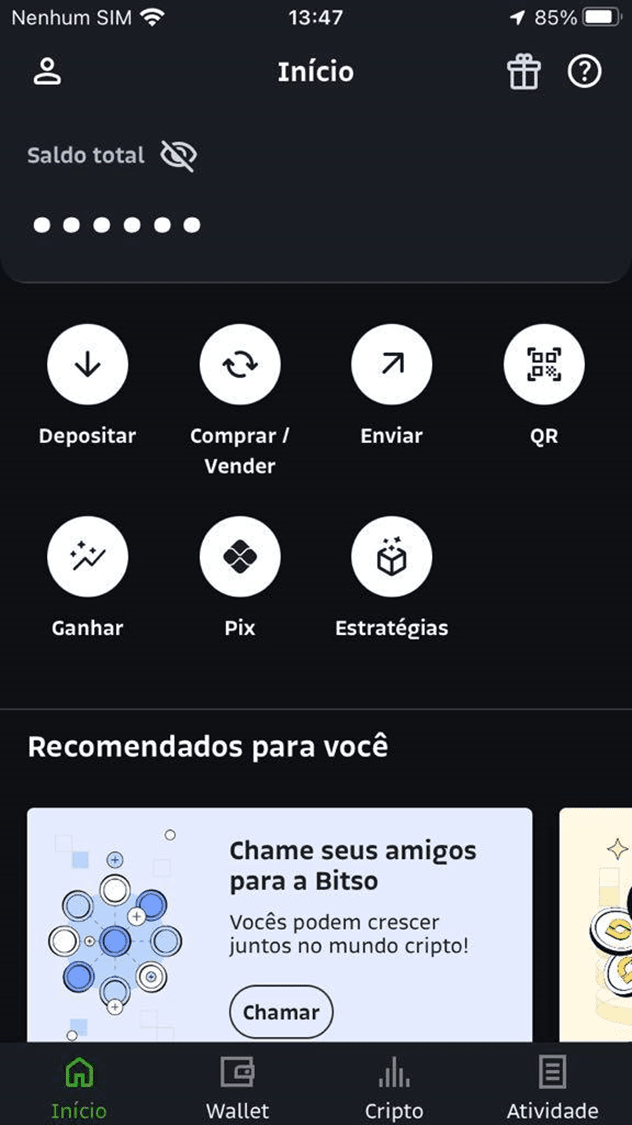
Summary: Binance makes it clear from the start that it is a powerful and comprehensive platform, but it can be complex. Bitso bets on a simpler and more accessible entry, suitable for those who value a more direct experience.
How Pix deposits work: Bitso vs Binance
On the 'Assets' screen of Binance, the deposit process is smooth: it is possible to add funds with a few clicks and the integration via Pix works well, with no fees. (Pix is an instant transfer system created by the Central Bank of Brazil, widely used locally.)
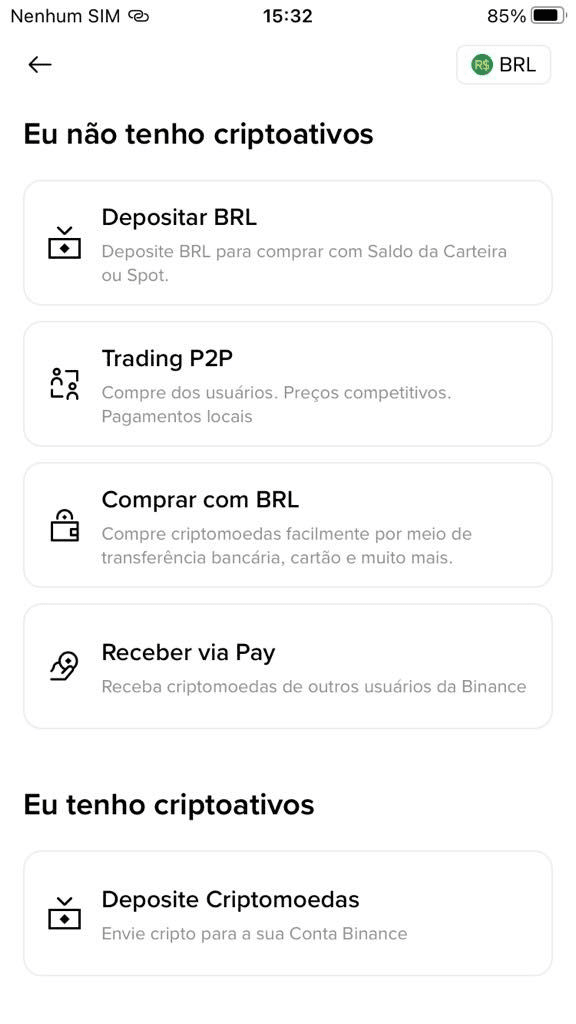
In the deposit screen of Bitso, we also tested the Pix transfer, with a promise of crediting in up to 10 minutes. The amount was credited in less than 5. The platform also allows deposits with Payoneer and cryptocurrency transfers.
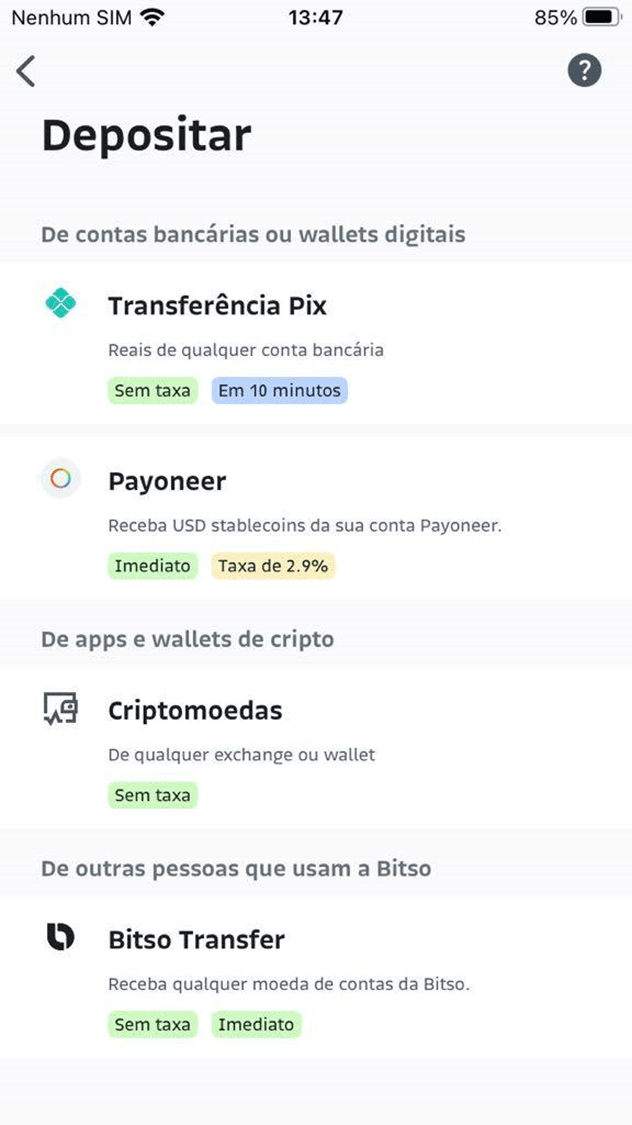
A differential of Bitso is that it is registered as a payment institution authorized by the Central Bank of Brazil. This means you can have a Pix key in your name (CPF, cell phone, email, or random), using the wallet as if it were a digital account.
Summary: Both work well and do not charge a commission for deposits in reais with Pix. But Bitso offers a more 'banking' experience, ideal for those who value integration with the financial system.
Cryptocurrency wallet interface: which is easier to use?
In the general view of Binance, balances are presented by categories like Earn, Spot, and Funds. This organization is more technical, ideal for those who already understand well the differences between those types of accounts.
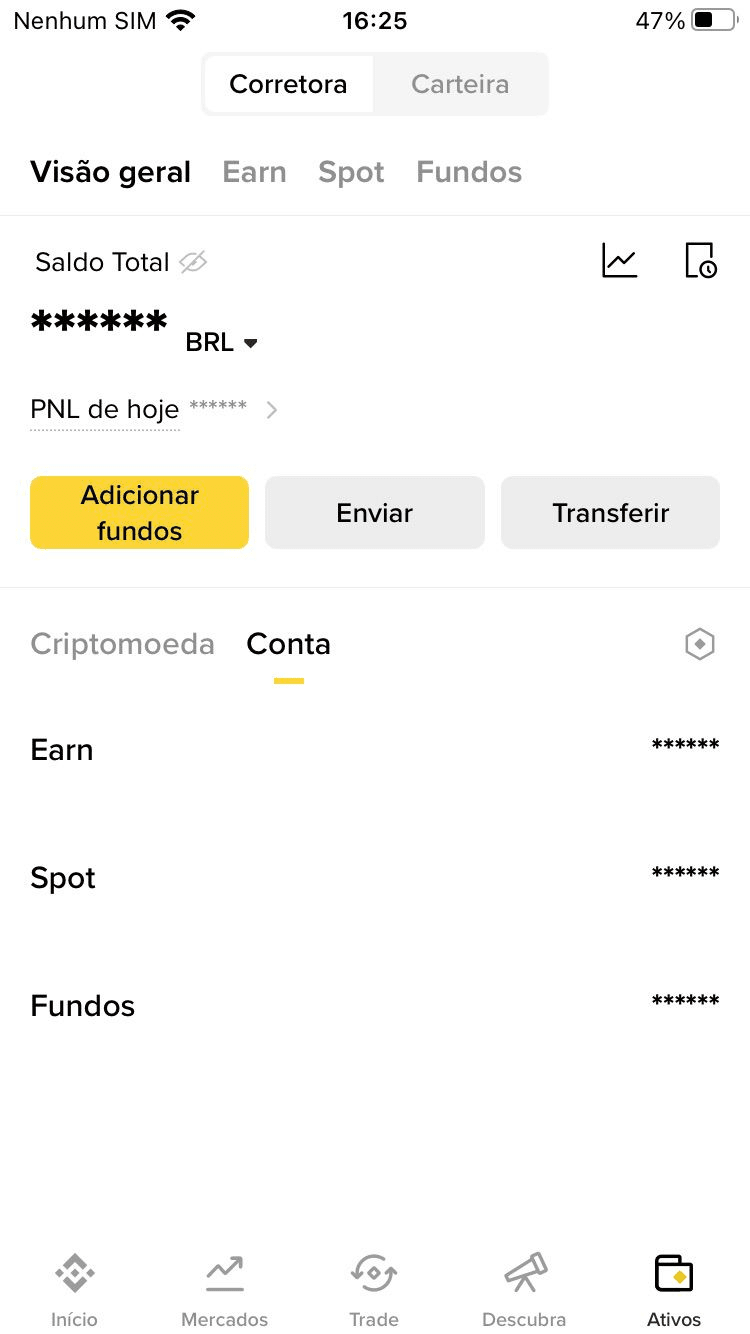
In the Bitso wallet, the presentation of assets is more direct. It is possible to see how much you have in reais, stablecoins, and other cryptocurrencies, with charts showing the allocation by percentage.
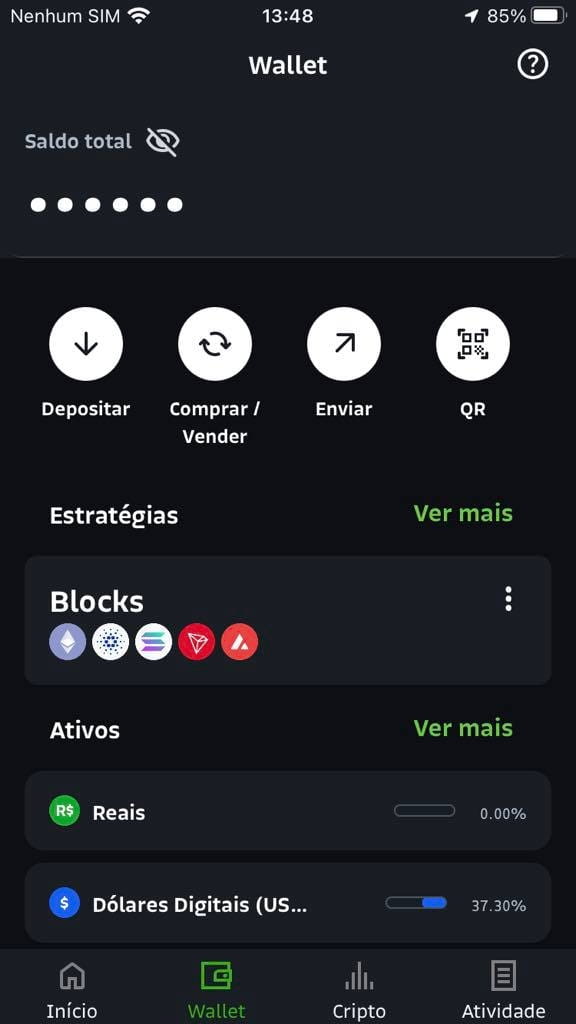
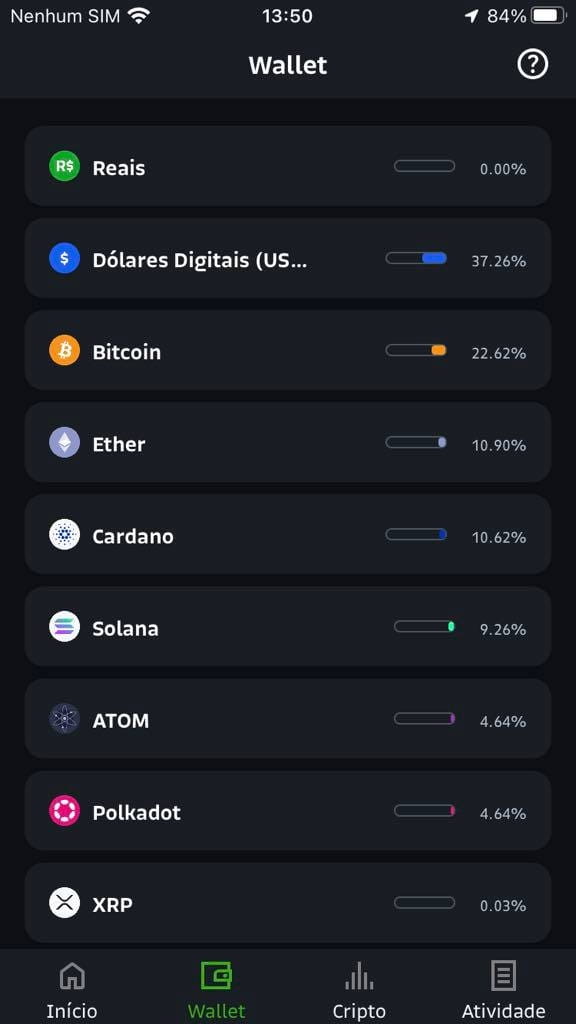
Summary: Binance segments balances by account type, which favors advanced users. Bitso simplifies visualization, being more user-friendly for those who just want to track their assets clearly.
Buying cryptocurrencies: how was the experience with each one
This point may go unnoticed, but it directly affects the investor's wallet: the financial conditions offered by each exchange. In this comparison, we simulated the purchase of XRP on both platforms with a similar amount.
In Binance, the system estimated the receipt of 0.84757739 XRP, already considering the slight price variation during the test. There was no intermediary commission charged. In addition to the simple conversion mode ('Convert'), Binance also offers more sophisticated buying tools — like trading on the Spot market — designed for users familiar with trading.
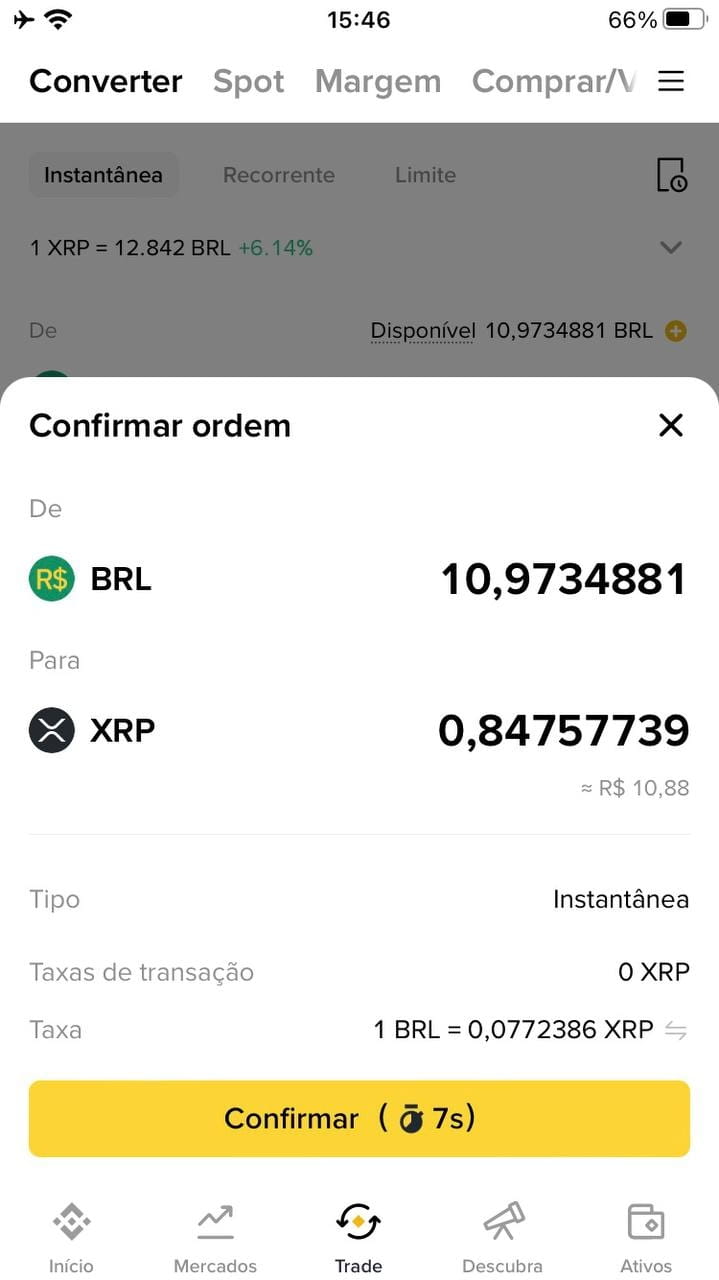
In Bitso, the purchase was made using reais directly to acquire XRP, with a reported spread of 0.5%. The applied price was 12.79 BRL per XRP, and the total received was 0.857 XRP, equivalent to 10.96 reais.
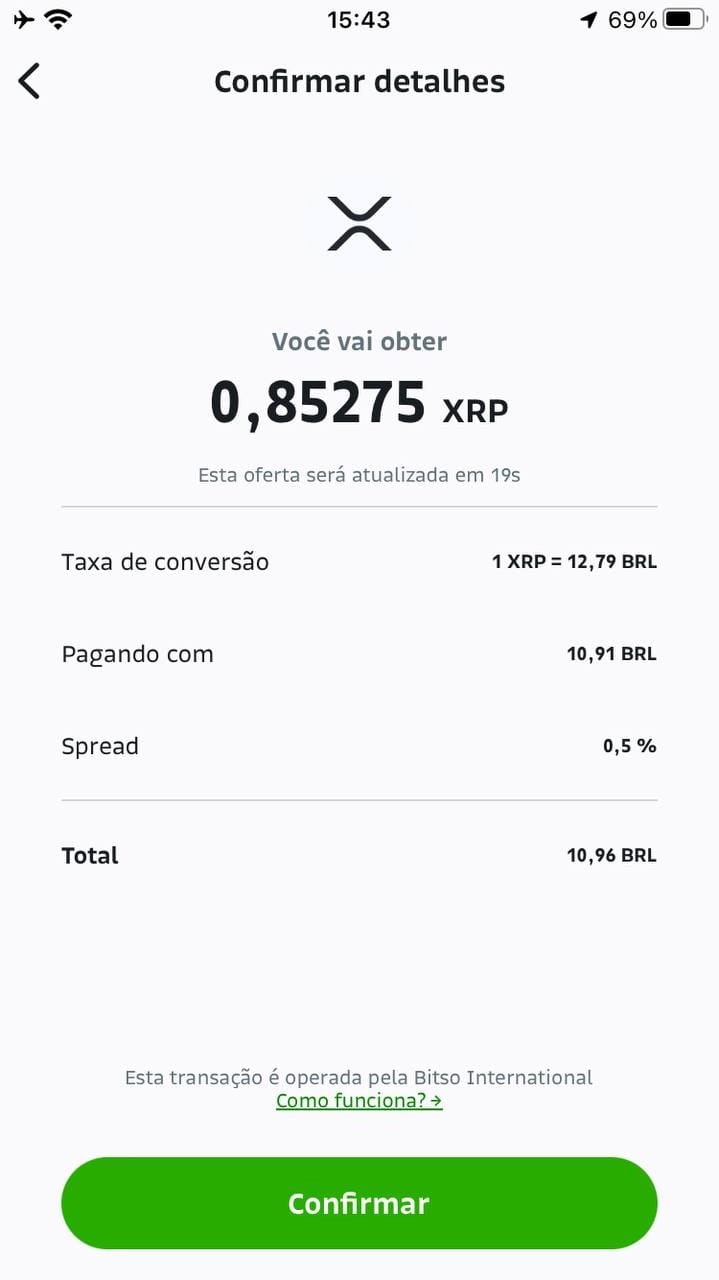
Summary: Bitso offered a more advantageous quote in this simulation, resulting in more XRP per real invested. The difference was small in a purchase of 10 BRL, but at higher values, the impact can be significant. Binance, for its part, offers more tools for operating with depth.
Exploration of assets and strategies
On the Binance market screen, navigation occurs through an extensive list of trading pairs, with variations in the last 24 hours and the possibility of leverage (like x5, x10).
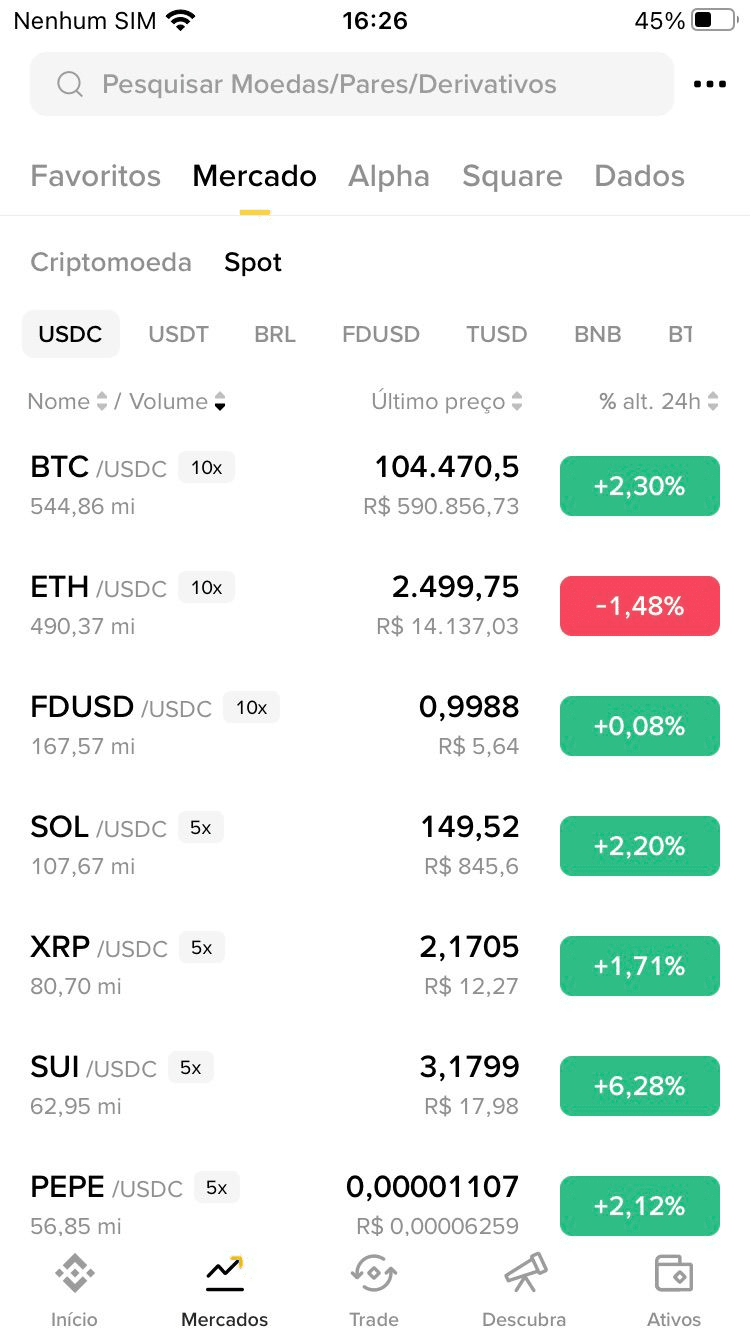
Binance also allows access to details of each crypto asset: by clicking on a coin (like BNB), you access the 'Information' tab to see charts, official site, circulation data, and other useful resources for deeper analysis (DYOR).

In Bitso, the 'Explore' screen presents a complete list of assets, highlighting those that have increased the most during the day, new listings, and filters by categories like Memecoins or DeFi. It's a practical way to follow trends and find new opportunities.
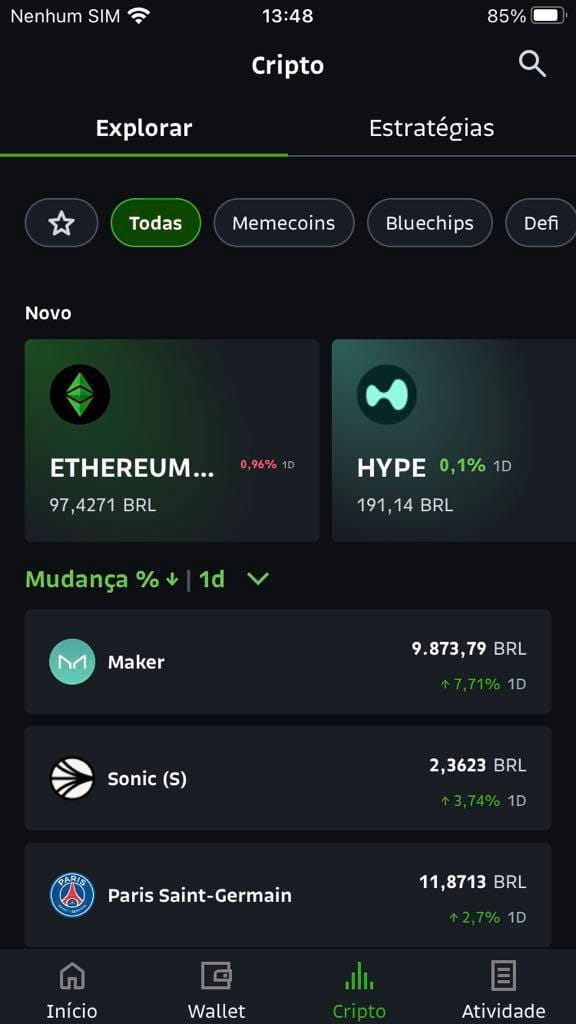
By clicking on a cryptocurrency (for example, Maker), you can see a chart with quotes, circulating units, project site, and more relevant information.
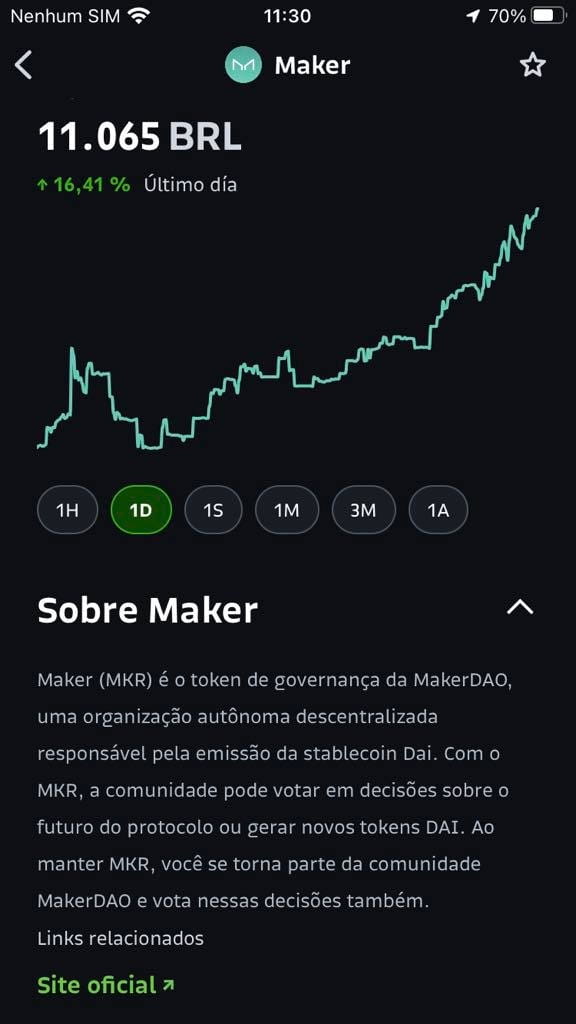
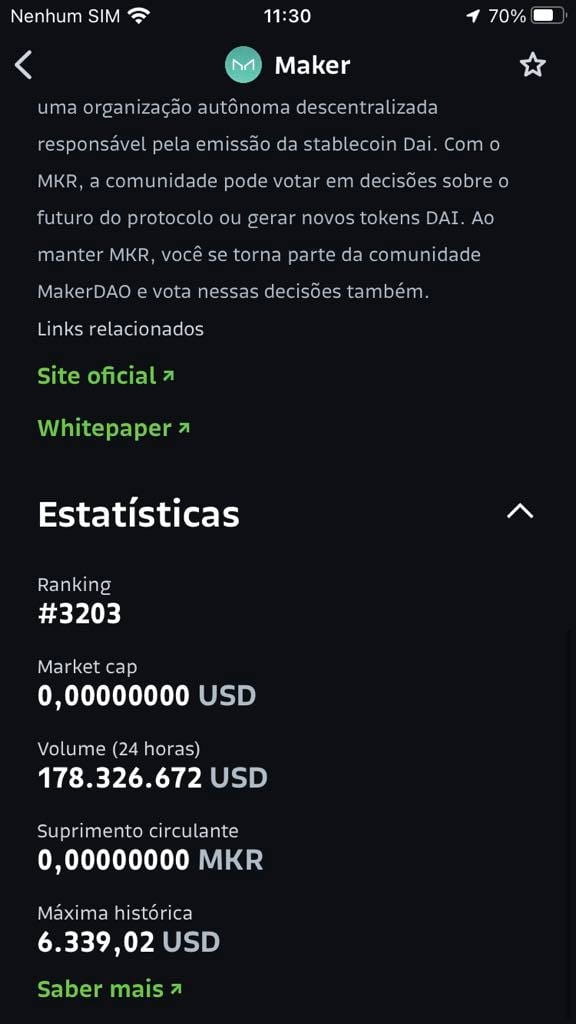
Additionally, in the 'Strategies' screen, the user finds thematic wallets like Classic, Blocks, and Pixels — which function as mini crypto ETFs, ideal for those who want to diversify without knowing each project.
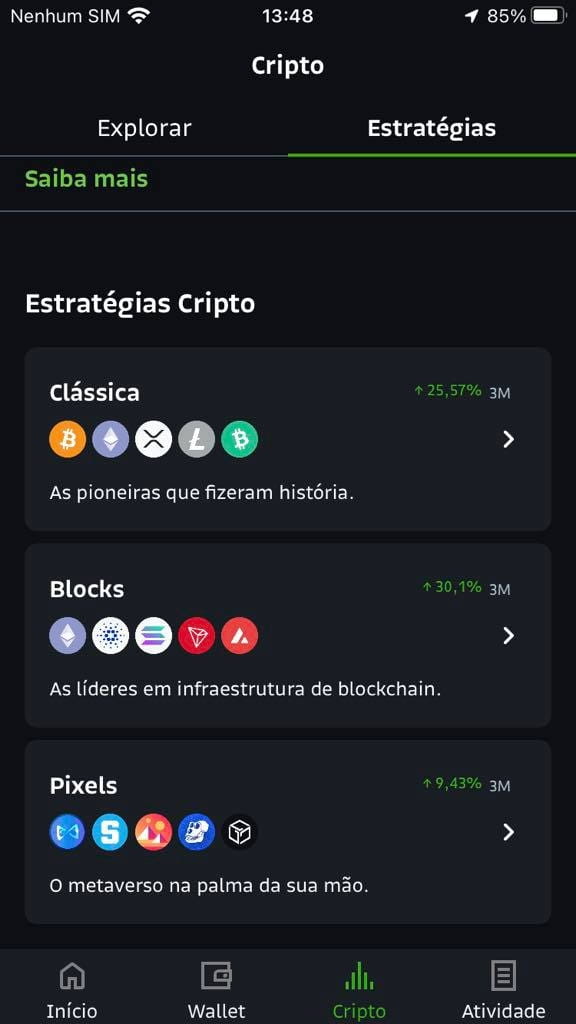
Summary: Binance provides depth of analysis and advanced features — ideal for users familiar with the crypto world. Bitso offers efficient curation, designed for those seeking practicality and guidance.
Transaction history: practical visualization
In Binance, the transaction history is available, but requires some additional clicks. You need to navigate to specific sections (like Spot, Earn, or Funds) and select the type of operation. While comprehensive, the system demands more user attention to find the records.
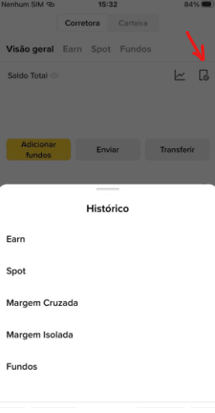
On the activity screen of Bitso, the visualization is straightforward: purchases, withdrawals, and deposits can be filtered by type and date, with everything organized clearly. The receipts for each transaction are accessible in a dedicated tab.
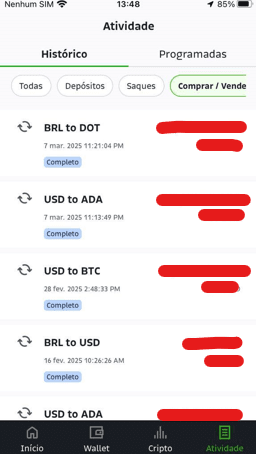
Summary: Binance offers a robust history but with more technical navigation. Bitso stands out for its usability, with simple access and receipts organized in a single interface.
Customer support: Binance vs Bitso
Both Binance and Bitso offer assistance via virtual assistant, but with notable differences.
The Binance assistant is more comprehensive. It accepts open questions and offers useful access, such as 'recent orders' or topics related to accounts and transactions. It is also possible to talk to a human agent, although more clicks are needed. Access to support is available from the main screen of the app (top right).


In Bitso, the 'Bitso Bot' initiates contact in a friendly manner, with options like starting support or changing language. After the initial contact, it is possible to be redirected to a human agent. It also offers tickets and a help channel by email for unresolved cases. However, access to support requires more steps: you have to enter the user's profile and navigate to the help section.
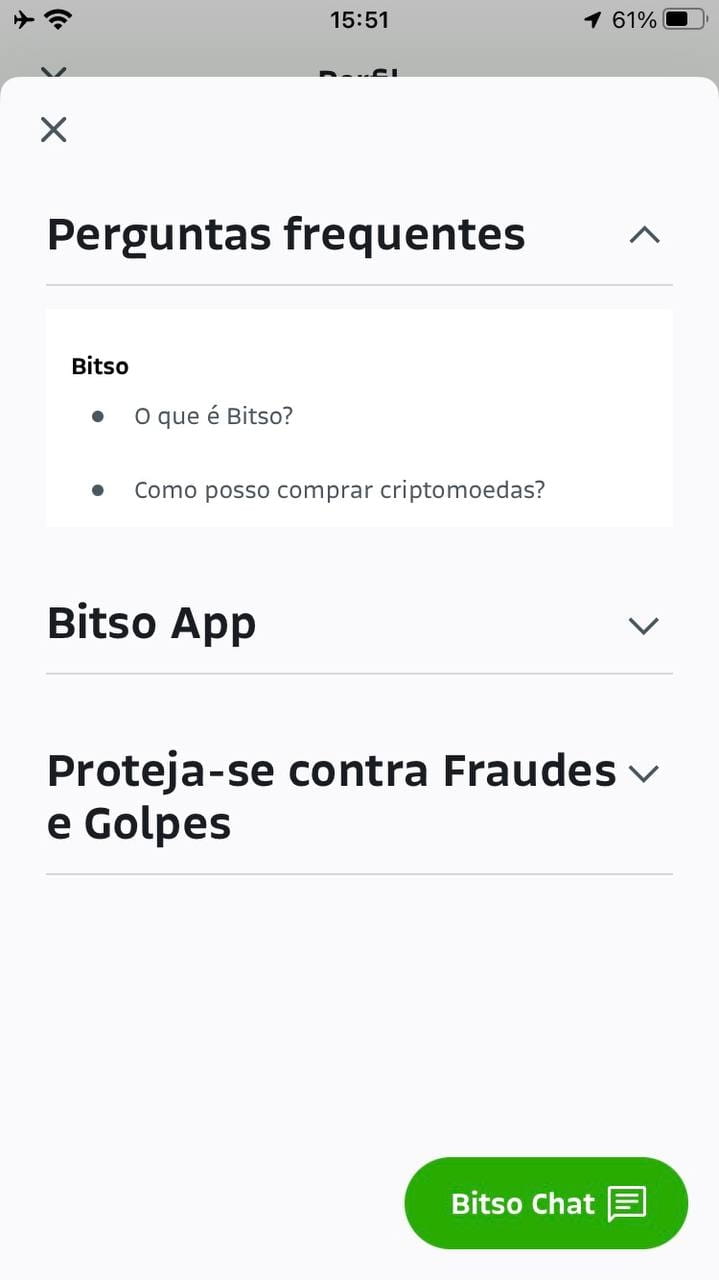

Summary: Binance offers a more complete support ecosystem, with greater availability, useful automations, and direct access. Bitso stands out for ease of initial contact, although it requires more steps to find the support section.
The advantages of Binance
Access to the order book and advanced order types (limit, stop, etc.);
More options for assets and trading pairs;
Powerful features for staking, earn, P2P, margin, and derivatives;
Wider ecosystem with web3 wallet and information in Binance Square;
Lower fees (up to 0.1%), although in our example, the quote was less favorable.
What Bitso does well (and even better)
Integration with Pix to use as a digital account;
Ease of use and intuitive navigation;
Purchase of assets with low amounts in a few clicks;
Thematic wallets that facilitate diversification;
Excellent experience for those who are starting.
What Bitso still lacks
Although it offers a great experience for beginners and average users, Bitso can still advance in some areas:
Does not allow P2P trading;
Does not show the order book, which limits control over prices;
Fewer staking options compared to Binance;
Less variety of assets and no drops like Binance's Megadrop.
Conclusion: Binance vs Bitso, which cryptocurrency exchange is better for you?
To facilitate your decision, we summarize the main comparative points in this table:
Ease for beginners
Binance: Resource-rich interface (steeper learning curve).
Bitso: Simple flow, intuitive menus.
Depth of resources
Binance: Spot, Convert, P2P, staking, leverage, Megadrop, Alpha, Wallet Web3.
Bitso: Thematic wallets (Classic, Blocks, Pixels), asset filters.
Approximate number of assets
Binance: More than 500 cryptocurrencies.
Bitso: Around 100 cryptocurrencies.
Deposits in BRL
Binance: No Commission, fast.
Bitso: No commission, via Payoneer or your own Pix key.
Quote in the test (XRP)
Binance: 0.8476 XRP (no commission, but less favorable).
Bitso: 0.857 XRP (0.5% spread, more favorable quote).
Transaction history
Binance: Comprehensive, but segmented.
Bitso: Everything in one tab, with visible receipts.
Support
Binance: 24-hour assistant, direct access from the start.
Bitso: Friendly bot, requires more steps.
Regulation in Brazil
Binance: Operates through local partners.
Bitso: Authorized by the Central Bank as a payment institution.
Binance remains one of the most comprehensive options for those seeking market depth and a wide range of products beyond simple buying and selling of cryptocurrencies. In addition to well-known features like Spot, P2P, staking, and leverage, it offers exclusive tools such as:
Megadrop – token launch platform that combines opportunities in Binance Earn with early access from the Wallet Web3;
Binance Alpha – hub to discover early-stage projects, with on-chain benefits and special events;
Binance Wallet Web3 – integrated self-custody wallet, no need for seed phrase and with functions like 'Emergency Export', ideal for combining autonomy with convenience.
Bitso, on the other hand, shines for its accessible and friendly approach, ideal for users in Latin America looking for a reliable platform, with a simple interface and smooth processes. It stands out for allowing purchases with low amounts, direct access to thematic wallets, and an experience that resembles a digital account, but focused on the crypto universe.
In summary, Binance is ideal for those who want to operate with greater depth and explore advanced opportunities. Bitso is perfect for those who value simplicity, clarity, and a more intuitive environment to start investing in cryptocurrencies in the region.
#binancevcbitso #CryptoExchange #Binance #Bitso
